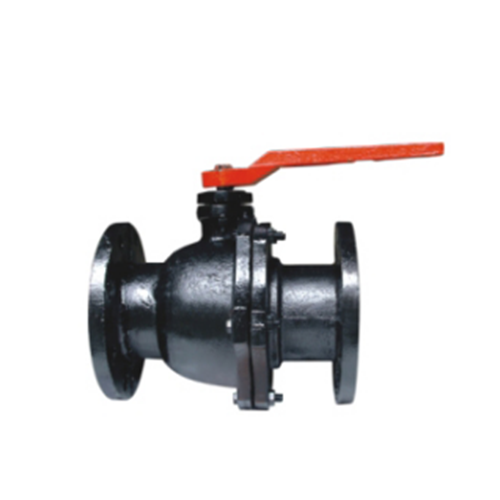
How to Choose Ball Valves for Cryogenic Applications
Introduction
Ball valves are among the most widely used valve types in industrial applications due to their reliability, tight sealing, and ease of operation. When it comes to cryogenic applications—typically defined as temperatures below -40°F (-40°C)—special considerations must be taken into account to ensure safe and efficient operation. Cryogenic ball valves are used in industries such as liquefied natural gas (LNG), aerospace, medical gases, and chemical processing, where materials and fluids are stored or transported at extremely low temperatures.
Selecting the right ball valve for cryogenic service requires careful evaluation of several factors, including material selection, design features, thermal management, and operational requirements. This guide provides a comprehensive overview of the key considerations when choosing ball valves for cryogenic applications.
1. Understanding Cryogenic Conditions
1.1 Definition of Cryogenic Temperatures
Cryogenic temperatures generally refer to environments below -40°F (-40°C), with common applications involving liquefied gases such as:
- Liquid Nitrogen (LN2): -320°F (-196°C)
- Liquid Oxygen (LOX): -297°F (-183°C)
- Liquid Hydrogen (LH2): -423°F (-253°C)
- Liquid Helium (LHe): -452°F (-269°C)
- Liquefied Natural Gas (LNG): -260°F (-162°C)
1.2 Challenges in Cryogenic Environments
Operating at such low temperatures presents unique challenges:
- Material Embrittlement: Many metals and elastomers become brittle and lose ductility.
- Thermal Contraction: Metals shrink significantly, potentially causing leaks or mechanical failure.
- Thermal Gradients: Rapid temperature changes can induce stress in valve components.
- Ice Formation: Moisture in the system can freeze, leading to operational issues.
- Seal Integrity: Traditional seals may fail due to extreme cold.
2. Key Selection Criteria for Cryogenic Ball Valves
2.1 Material Selection
The choice of materials is critical for cryogenic applications to prevent failure due to brittleness or contraction.
Body and Trim Materials
- Stainless Steel (SS316, SS304L): Most common due to excellent low-temperature toughness.
- Austenitic Stainless Steels: Retain ductility at cryogenic temperatures.
- Nickel Alloys (Inconel, Monel): Used for extreme cryogenic conditions (e.g., liquid helium).
- Aluminum Alloys: Lightweight and suitable for some cryogenic applications.
- Brass and Bronze: Generally avoided due to poor low-temperature performance.
Seat and Seal Materials
- PTFE (Teflon): Widely used for its flexibility and low friction, but may stiffen at very low temps.
- PEEK (Polyether Ether Ketone): High-performance thermoplastic with excellent cryogenic properties.
- Graphite: Used in high-pressure cryogenic applications.
- Metal Seats: Preferred for ultra-low temperatures where elastomers fail.
2.2 Valve Design Features
Cryogenic ball valves require specialized design considerations to handle thermal stresses and ensure leak-tight performance.
Extended Bonnet or Stem Design
- Prevents heat transfer from the environment to the cryogenic fluid.
- Reduces ice formation on the stem and actuator.
- Ensures proper sealing at the stem packing.
Fire-Safe Design
- Some cryogenic applications (e.g., LNG) require fire-safe certification (API 607/API 6FA).
Low Emission Compliance
- Fugitive emission standards (ISO 15848, TA-Luft) may apply to prevent leakage.
Double Piston Effect (DPE) Seats
- Provides bidirectional sealing and prevents seat damage due to thermal cycling.
2.3 Thermal Management
- Thermal Insulation: Valves may require vacuum-jacketed or insulated designs.
- Heat Sinks: Some designs incorporate heat sinks to manage thermal gradients.
- Gradual Cooling: Pre-cooling procedures may be necessary to avoid thermal shock.
2.4 Pressure and Temperature Ratings
- Ensure the valve meets the required pressure class (ANSI, ASME, or DIN).
- Verify temperature rating (e.g., -320°F for liquid nitrogen service).
2.5 End Connections
- Flanged: Common for high-pressure cryogenic systems.
- Threaded: Used in smaller systems but may require seal welding.
- Welded (Butt-Weld or Socket-Weld): Preferred for high-integrity applications.
2.6 Actuation Options
- Manual: Lever or gear-operated for smaller valves.
- Pneumatic or Electric: Used for automated cryogenic systems.
- Cryogenic Actuators: Specialized actuators designed for low-temperature operation.
3. Testing and Certification Requirements
3.1 Cryogenic Testing
- Cold Cycling Test: Ensures valve performance after repeated thermal cycles.
- Leak Testing: Helium leak testing is common for high-integrity applications.
- Bubble-Tight Shutoff: Valves must achieve zero leakage under cryogenic conditions.
3.2 Industry Standards
- BS 6364: Standard for valves in cryogenic service.
- ISO 21011: Cranes and valves for cryogenic service.
- API 6D: Specification for pipeline valves (includes cryogenic requirements).
- ASME B16.34: Pressure-temperature ratings for valves.
4. Installation and Maintenance Considerations
4.1 Proper Installation
- Orientation: Some cryogenic valves must be installed in a specific orientation.
- Purging: Ensure the system is free of moisture before introducing cryogenic fluids.
- Torque Requirements: Follow manufacturer guidelines to avoid over-tightening.
4.2 Maintenance Best Practices
- Regular Inspection: Check for signs of wear, leakage, or ice buildup.
- Lubrication: Use cryogenic-compatible lubricants.
- Replacement of Seals: PTFE seats may require periodic replacement.
5. Common Applications of Cryogenic Ball Valves
- LNG Plants: Storage, transport, and regasification systems.
- Aerospace: Liquid oxygen and hydrogen handling.
- Medical Gases: Storage of liquid nitrogen for medical applications.
- Superconductivity: Liquid helium systems in research facilities.
- Chemical Processing: Cryogenic separation and purification.
6. Conclusion
Selecting the right ball valve for cryogenic applications requires careful consideration of materials, design, thermal management, and operational conditions. By adhering to industry standards and best practices, engineers can ensure reliable performance, safety, and longevity in extreme low-temperature environments. Always consult with valve specialists and review manufacturer specifications to match the valve to the specific cryogenic service requirements.
Would you like additional details on any specific aspect of cryogenic ball valves?
Este sitio web utiliza cookies para garantizar que obtenga la mejor experiencia en nuestro sitio web.
Comentario
(0)